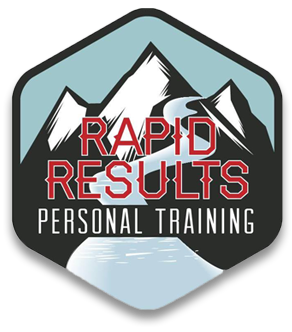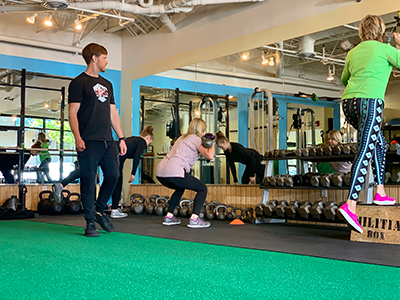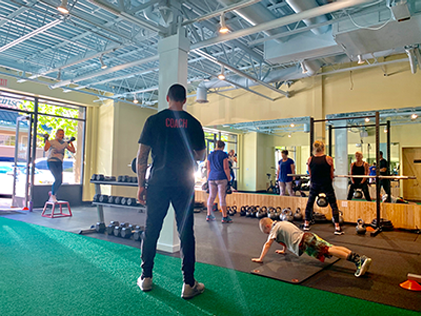Since you’re reading my emails, I know that you’re a health-conscious, fitness-minded person in quest of your best body ever.
You likely exercise regularly. You watch what you eat. You keep up-to-date on the latest health concerns. You don’t binge on sugar. You never eat fast food. Well, almost never.
But you do have a few unhealthy skeletons in your closet – ones that you probably aren’t even aware of.
Here are 5 easy habits to cranking up your fitness results..
1. Get More Sleep
- In Gallup Poll surveys, 56% of the adult population reported that drowsiness is a problem in the daytime. That means that more than half of the population doesn’t get adequate sleep.
- Healthy adults require 7-8 hours of sleep each night. When you fail to meet this need your body goes into sleep debt, which continues to accumulate indefinitely until you catch up.
- A lack of sleep negatively affects your immune system, your nervous system, and interferes with healthy hormone release and cellular repairs.
The best way to combat sleep deprivation is to set a scheduled bedtime. Your body will benefit from a consistent sleeping and waking routine, and you’re sure to get all the rest you need.
If you have trouble falling asleep once you’re in bed, then try these two tips. First, make sure that you don’t drink any caffeinated beverages after lunchtime. Second, don’t eat for three hours before you go to bed. This helps eliminate sleeplessness due to indigestion, and will also turbo-charge your weight loss.
2. Drink More Water
- It has been said that 75 percent of the population is chronically dehydrated. Would you disagree? When was the last time that you actually drank 8 glasses of water in a day?
- Dehydration occurs when more fluid leaves your body than is taken in. Symptoms include: fatigue, irritability, headaches, nausea, rapid heart rate, and, in extreme cases, even death.
- Dehydration also slows your metabolism, which hinders weight loss.
You shouldn’t wait until the feeling of thirst or dry mouth hits you, at that point damage has already been done. Instead, constantly rehydrate throughout your day to avoid dehydration.
The best way to do this is to incorporate water into your daily schedule. Have a water bottle at your desk and train yourself to sip on it often and get into the habit of drinking a full glass of water with each meal and snack.
3. Reduce Your Stress
- I don’t have to tell you that we are living in a fast-paced world and that most of us have stress levels that are through the roof. But what you might not realize is that your stress levels are making you fat.
- Stress creates an increase in the hormone cortisol, and chronic stress creates a chronic increase in cortisol. This is a problem because is slows your metabolism, leads to cravings and is linked to greater levels of abdominal fat storage.
- The vicious cycle of stress and weight gain goes around and around. Stress causes you to eat emotionally, and your raised cortisol levels cause that food to be stored as fat.
One of the most effective ways to instantly eliminate stress is to sit down and write out a list of all the things that are bothering you. This should include things that you need to get done, issues that weigh on your mind and anything you believe contributes to your stress level.
Once it’s all down on paper, organize it like a to-do list and start resolving each item. Doing so will get the stress off of your mind and will put your body into the motion of resolving each issue.
4. Eat Out Less Often
- Research suggests that most people eat out one out of every 4 meals and snacks. That’s an average of once a day.
- Restaurant food is designed to do one thing: to taste good. In order to increase eating pleasure, each item is loaded with fat, salt and sugar. This causes you to eat way more calories than you actually need.
- Even when you order ‘healthy’ items, you’re still taking in more calories and fat grams than you would if you had prepared the item at home. Imagine the last salad you ordered out. Didn’t it come with cream dressing, croutons, cheese sprinkles and a piece of butter-laden bread on the side?
The main reason people eat out is for convenience, so with a little organization you’ll find that preparing your own meals takes less time than you thought it would. On the weekend sit down and plan out your meals for the week. Then go to the grocery store and stock up on everything you’ll need for those meals.
Pack your lunch and snacks each night before bed, then grab it on your way out the door in the morning. When you prepare dinner at home, make enough for at least the next day as well. Your efforts will pay off both in terms of weight loss and in money saved.
5. Exercise Smarter
- You do the same thing each and every time you exercise. Same machines, same pace, same duration. While your routine sure feels comfortable, your results have long since halted.
- A plateau occurs when your body adapts to your routine and weight loss stops. It is incredibly frustrating, and totally avoidable.
- You don’t have to increase the amount of time that you spend exercising in order to see quicker, faster results. It’s all about challenging your body.
There are two simple ways to instantly increase the effectiveness of your exercise routine. First, increase your pace. Secondly, increase your intensity. Constantly vary your speed and intensity in order to keep your muscles guessing and adapting.
Another way to break through the exercise plateau is to do something totally new. If you regularly use weight machines then start using free weights. If you normally jog on the treadmill then start using the bike.
Are you ready to break the plateau as you take your routine to the next level?
Would you like to know without a shadow of a doubt that you are going to lose weight in the coming months?
It’s my goal to see you achieve greatness. I believe that you’ve got what it takes.
Call or email today to get started on the fitness program that will improve your health and well being and will get you amazing results.
Let’s do this!


